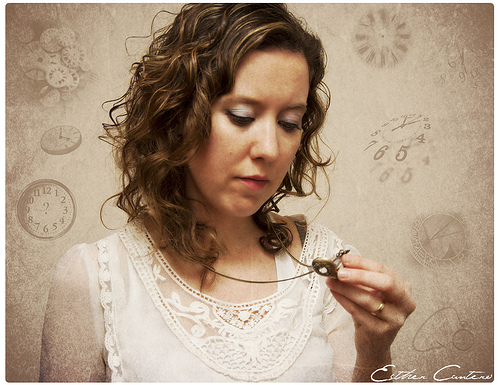The Key to Creating a Wholly Believable Character
Last week I talked about the natural action-reaction cycle that’s such an important issue in fiction writing. So many manuscripts I critique are missing key reactions from characters. This oversight—and I believe that’s what usually causes this problem—is similar to scenes lacking appropriate description of setting or characters.
Writers see their scenes in their heads, and often while attempting to get all the many details down and locked in, they fail to pay attention to these nuances and trimmings. Yes, it’s often easier to come back later and fill those in—bring in sensory elements and the touches of description that help bring a scene to life.
And writers can certainly add in those needed reactions as well. So long as they can spot what’s missing.
While a lack of description details can be easy to spot and subsequently provide, if a writer doesn’t really get the natural flow of action-reaction, he won’t know it’s missing. Or know how to insert it so it’s believable.
Put Yourself in Your Character’s Shoes
So much of writing great fiction lies in the ability for writers to put themselves in their characters’ shoes (or slippers or moccasins). I don’t think writers take enough time to sink into the roles of their characters. To mull over how it feels to be George or Sally or Fido.
I truly believe the best writers are the ones who have a gift of acting. And while you might not feel you are talented in that way, I do believe you can train yourself to be. If you’re not the type that likes to psychoanalyze yourself or others, this is going to be harder for you than for some other authors.
Don’t Get Stuck in Left-Brain Tendencies
I notice a lot of my editing clients struggle with this. These are the writers who tend to be left-brain analytical. They might work as CPAs and computer programmers (not to stereotype here or say people with these vocations can’t immerse themselves in character). But they’re the kind of thinker that sees plot at the crux of story, and they often have a hard time feeling what their characters feel. They approach their fictional characters logically and practically, writing out long descriptions of who they are, their background, their hobbies and interests, their goals.
Which is all well and good. But to get past the surface of plot and structure and get deep into story, it really requires getting deep into characters.
A solid plot and intriguing concept go a long way toward a terrific novel that readers will love. But if characters don’t behave naturally, as we looked at last week, they are going to fall flat—and drag that terrific plot with them into the mire of failure.
Yet, it doesn’t require years of college courses in psychology to be able to successfully portray characters that emote and react naturally and authentically to the events. It mostly takes a little time and effort to stop and imagine yourself in any given situation.
Let’s take this sample scene:
David turned suddenly and glared at Beth. “Would you please stop it?”
Beth frowned. “Stop what?” All she was doing was washing the dishes. Just like she always did after dinner.
He sighed, then pushed his chair away from the table. “That humming. It drives me crazy.”
Humming? He could hear her humming over the clatter of dishes and the water running? “Sorry. I’ll stop.”
David stood, stuffed his phone in his pocket, and bit his lip.
Beth looked at him, wondering what he was thinking.
“I can’t do this anymore,” he said.
“Do what?” she asked.
“Pretend like we’re happy. That we have a perfectly normal marriage.”
“We don’t?” she asked.
David let out a bitter laugh. “I have to go.”
“Where?”
He pulled his coat off the back of the chair and shrugged it on. “Out. Somewhere. I feel trapped here.”
“Oh.” She waited for him to say more, but he just stood there. She had no idea he felt this way.
“I’ll . . . text you later. Let you know where I’ll be staying.”
“You mean you’re not coming back?”
“No.” He strode to the door, and without another word, left the house.
Beth set the plate down in the sudsy water. If David wasn’t coming back tonight, she would have to take her own car in tomorrow to get that starter replaced. And that means she’d be later for work. She couldn’t risk being late again.
I’ll just take a taxi to work and worry about the car later. How could David do this to her?
There are lots of things wrong with this snippet of scene, but the main thing I want to focus on is the lack of appropriate reactions on Beth’s part. I describe the action correctly; this is what happens in the scene. And I’ve put in some of Beth’s thoughts. They seem natural, right? But what’s missing?
Don’t Rush to Get on with the Scene
When someone says or does something unexpected, we don’t just answer or react quickly and logically. David reveals he’s upset with their marriage. He’s dropped a bomb on her, saying they’ve only been pretending. Clearly, he’s the one that’s been feeling like that, but she doesn’t share that sentiment. She’s surprised he feels this way. Yet, she doesn’t really process what he’s saying. She doesn’t react.
So this is what a lot of writers do. They next show their character rush into saying something without taking a beat to process what’s been said. It’s that processing moment that’s missing. We hear something off, upsetting, jarring, incongruous, unexpected, and we short-circuit for a moment.
There’s that bit of time in which we struggle with what we’ve heard or seen. We have a visceral reaction of “What? Huh?” which is often accompanied (depending on how intense the situation) with some instant emotional response that is physical.
Think about this: someone comes over to you and says with a terrible upset look in her eyes and says, “Honey, sit down. I have . . . something terrible to tell you.” And then her tears stream down her face.
Close Your Eyes
Close your eyes a moment and picture yourself hearing this. Maybe you’ve been through this exact experience (and you don’t want to relive that awful moment).
Our bodies are such that when we get alerted to danger (which is how “bad news” is interpreted by our physiology), we feel fear. Fear prepares us to react to danger. Once we sense a potential danger, our body releases hormones that slow or shut down functions not needed for survival (such as our digestive system) and sharpen functions that might help us survive (such as eyesight). Our heart rate increases, and blood flows to muscles so we can run faster. Our body also increases the flow of hormones to an area of the brain known as the amygdala to help us focus on the presenting danger and store it in our memory.
Once the fear pathways are ramped up, the brain short-circuits more rational processing paths and reacts immediately to signals from the amygdala. When in this overactive state, the brain perceives events as negative. It also stores all the details surrounding the danger—the sights, sounds, odors, time of day, weather, and so forth. These memories tend to be very durable, although they may also be fragmented. They can then pop up when triggered by other similar events in our lives.
Our characters should have bodies that do all this too.
So What’s a Writer to Do?
When working on a scene, take a moment to close your eyes and get into character. Be that character. Think how you would react to the things said and done in the scene. You want your POV character to go through that natural process and react in a believable way.
How you write it can vary. Beth can show outward signs of confusion and surprise (generated by that immediate sense of fear) through her body language of being flustered, freezing in place, a sick feeling in her stomach. Or you may instead want to use the more powerful way of showing emotion by playing out confused thoughts in her head as she’s not sure she heard him right and tries to dissect what he’s really (subtext) saying and meaning.
Beth jumps too quickly past all this reaction to the much-later expected musings of the practical. She needs to get her car fixed, now that David drove off with the only working vehicle (assumed). But this is not one of the first things a person is going to think the moment after her husband drops a bomb on her and walks out. That will come later, much later, in the midst of her mental chaos and upset, as one more thing she just can’t deal with.
Nowhere in the scene do we see Beth really react. She must have some feelings, right? His actions and words should hurt, right? The writer of such a scene probably sees and knows Beth is hurt, but that is not coming across to the reader.
And here’s the main thing: if your character is not feeling anything, neither will your reader. You aren’t going to engage your reader and she will stop reading. Readers read to care. To empathize and immerse themselves in the lives of the characters.
So learning how to show these natural processes of reaction and emotion are so important. Yes, they will vary by genre in the intensity and way they’re described. With political thrillers, you might find something more like this (Nelson DeMille, Radiant Angel, page 2):
It took him only a few minutes to decipher the communication, and when he was done he put down his pen and looked at the words.
Greetings: You will commence Operation Zero on Sunday.
He read it again.
Like all men from the beginning of time who await their orders and their fates, he was relieved that the wait was over, and he felt a mixture of calm and confidence, along with a sense of anxiety. It was not death that he feared; it was failure and disgrace—a fate far worse than death.
It’s common in this genre to have characters think about what they’re feeling rather than to visibly emote all over the place. But I hope you notice here that DeMille’s character reacts. He reads the words of his assignment, and then there is a pause. He reads it again, and then he processes.
While it’s not as impacting to tell what a character is feeling rather than show it, it’s perfectly appropriate for this type of novel—which attracts readers who aren’t interested in gushing emotions. They’re reading for the excitement of the plot and the action. But if DeMille’s characters didn’t take the time to react and note the emotions they’re feeling, he wouldn’t (in my opinion) be a best-selling author (and I love his novels).
I hope this deeper look into action-reaction gets you going back to your pages and searching for those missing bits. Scenes that lack this natural cycle will jar readers and cause a disconnect. Don’t let that happen with your scenes.
Take the time to close your eyes and imagine yourself as your character. Sure a certain type of character may slip instantly into denial, but that’s still reaction you need to show.
Your thoughts? Does it bother you to read passages that don’t fully and naturally show a character’s reaction? Have you read anything lately that jarred you in this way? Does this help you with your own story you’re working on?












thank you for this post!! very encouraging to me—i don’t know how many times i close my eyes and am there, IN the scene, typing what i am “experiencing!” (the actor in me is a real benefit!!)
This is a very valuable post! Thanks.
All absolutely true and I realize this passage is used to show a bad example of writing believable characters. However, not knowing anything about them or their history, my first reaction was that this woman was shut down emotionally, couldn’t deal with what she was hearing and jumped instead to the practical. Sometimes the initial reaction to shock is denial. Interpreting it that way made me want to read more.
Thanks, Susanne, for this great post. I recently read a wonderful novel, but the one element missing at times was this exact thing: reactions from the two main characters who were experiencing some horrific circumstances. That lack made me shake my head a bit in frustration, which distracted me from enjoying an otherwise great read. Also, some of the reactions that were given didn’t ring true for me. I appreciated your helpful tips and insights.
Thanks for sharing that. We expect natural and believable reactions from people around us, so when characters don’t do the same, it feels off and unsettling. It takes work to learn how to smoothly insert believable reactions into scenes, but by putting ourselves in our characters’ situations (in our mind), it makes it easier.
Simple answer to your question. Yes. I enjoy reading the before and after analysis, especially how you dealt with the section where there was no response by Beth. Even if the person, Beth in this example, goes into “what to do about the car” there is a split second or two and you have shown how to approach that small timeframe. Thank you.
Most of the time what’s missing is a tiny beat. Yet, those beats can make a huge difference in believability. Thanks for sharing that comment.
Thank you for this timely post! I’m working on revising my WIP at this point, and you’ve reminded me what I need to watch for. Good critique partners are valuable for helping find these spots, but I need to learn how to spot them myself, and even better, avoid writing them to start with.
Yup, this is me! Dwight Swain addresses this as well in his craft book Techniques of the Selling Writer. He calls them motivational reaction units (a nice analytical term for a left-brainer or like me). He suggests you follow the pattern of: outside stimulus > feeling> action> speech. I tend to leave out the feeling part, as you suggest. His MRUs seem a bit mechanical but Ive found that the more I’m conscious about this, the more natural it is becoming. It creates a kind of rhythm of stimulus/feeling response/reaction that feels, well, real!